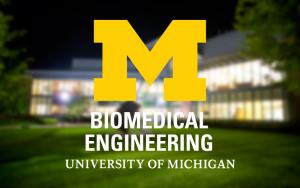Presented By: Biomedical Engineering
Improving Intracortical Microelectrode Interface Utilizing Nano-Architecture
BME 500 Seminar: Evon Ereifej, Ph.D. Investigator, Veteran Affairs Ann Arbor Healthcare System

Abstract: Intracortical microelectrodes provide a means to both treat and understand diseases and injuries of the nervous systems. A major hurdle to the clinical deployment of microelectrode technologies is recording instability caused by the neuroinflammatory response and lack of integration with the native tissue. The neuroinflammatory response observed after device implantation has been linked to oxidative stress that occurs due to neurological injury and disease. It is important to improve the understanding of the neuroinflammatory and oxidative stress response in order to develop next generation electrodes and treatment strategies. A potential strategy to mitigate this response involves understanding the disparity in architecture between the in vivo environment and commercially available intracortical microelectrodes. The smooth surface structure of intracortical microelectrodes implanted within the nanometer-scale architecture of brain tissue may contribute to the foreign body response. The factors examined in Dr. Ereifej’s work and how they are utilized to inform the future design of compatible intracortical microelectrodes will be discussed.